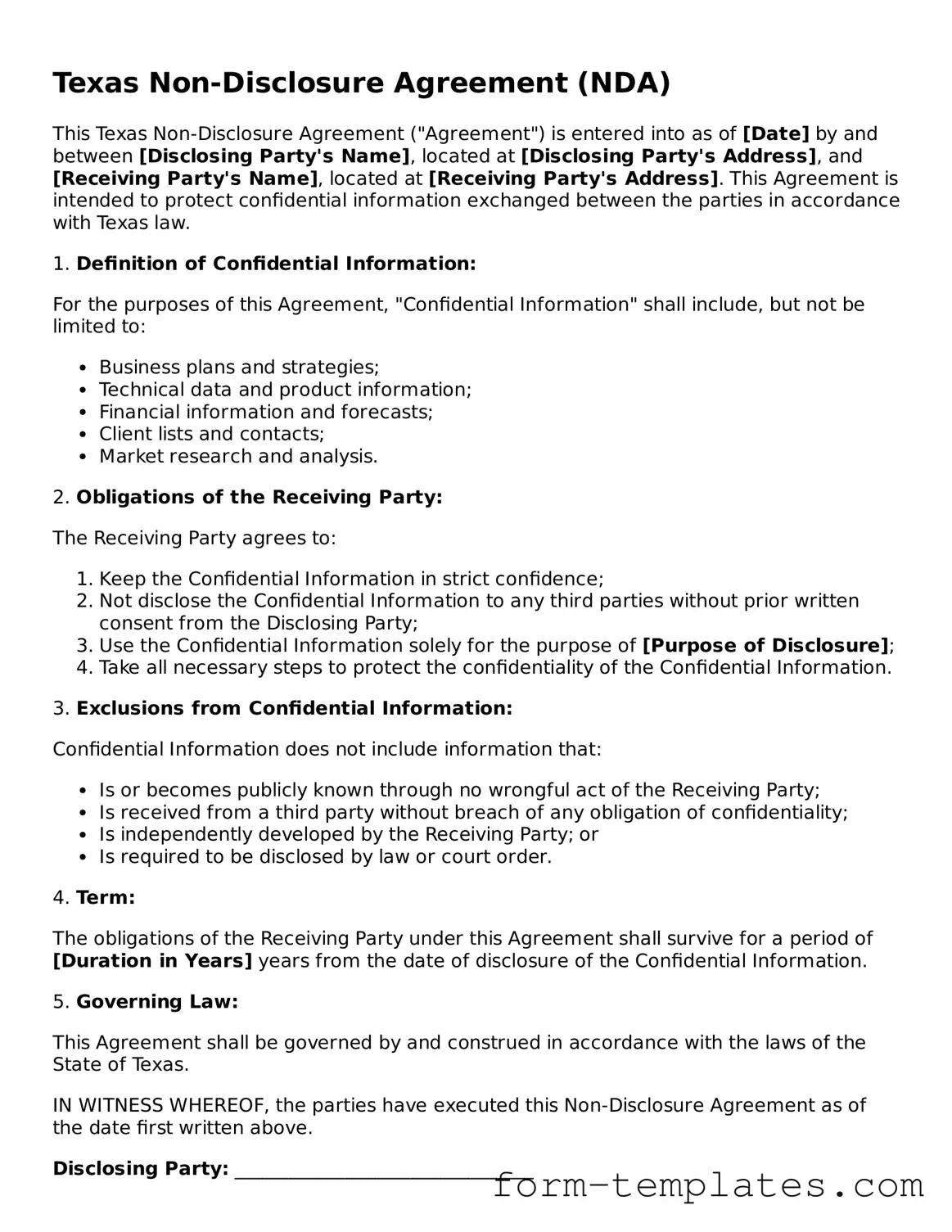Texas Non-Disclosure Agreement (NDA)
This Texas Non-Disclosure Agreement ("Agreement") is entered into as of [Date] by and between [Disclosing Party's Name], located at [Disclosing Party's Address], and [Receiving Party's Name], located at [Receiving Party's Address]. This Agreement is intended to protect confidential information exchanged between the parties in accordance with Texas law.
1. Definition of Confidential Information:
For the purposes of this Agreement, "Confidential Information" shall include, but not be limited to:
- Business plans and strategies;
- Technical data and product information;
- Financial information and forecasts;
- Client lists and contacts;
- Market research and analysis.
2. Obligations of the Receiving Party:
The Receiving Party agrees to:
- Keep the Confidential Information in strict confidence;
- Not disclose the Confidential Information to any third parties without prior written consent from the Disclosing Party;
- Use the Confidential Information solely for the purpose of [Purpose of Disclosure];
- Take all necessary steps to protect the confidentiality of the Confidential Information.
3. Exclusions from Confidential Information:
Confidential Information does not include information that:
- Is or becomes publicly known through no wrongful act of the Receiving Party;
- Is received from a third party without breach of any obligation of confidentiality;
- Is independently developed by the Receiving Party; or
- Is required to be disclosed by law or court order.
4. Term:
The obligations of the Receiving Party under this Agreement shall survive for a period of [Duration in Years] years from the date of disclosure of the Confidential Information.
5. Governing Law:
This Agreement shall be governed by and construed in accordance with the laws of the State of Texas.
IN WITNESS WHEREOF, the parties have executed this Non-Disclosure Agreement as of the date first written above.
Disclosing Party: ________________________________
Title: ________________________________________
Date: ________________________________________
Receiving Party: _______________________________
Title: ________________________________________
Date: ________________________________________
